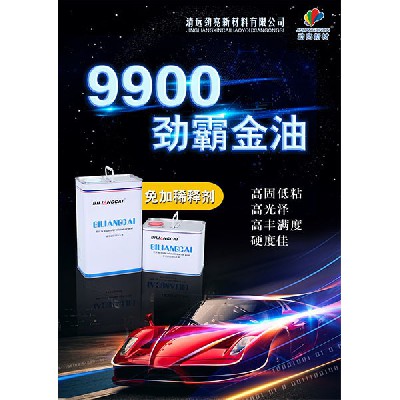Automotive repair paint: How many layers of automotive paint are there
A total of 4 coats of paint are applied to a typical brand new vehicle:
1. Electrophoretic paint layer: It should be mentioned here that before the electrophoretic paint layer, there is a process of phosphating the sheet metal. The first step is to form an insoluble phosphating film on the surface of the sheet metal, maintaining the sheet metal and improving its corrosion resistance. Electrophoretic paint coating is the process of soaking the entire vehicle body into the electrophoretic pool without any dead spots, rolling or blistering. Its primary function is to prevent rust, rust, and serve as the bottom layer of the vehicle's rust.
2. Intermediate primer layer: In fact, the electrophoretic paint layer is not directly applied to the intermediate primer layer. We know that the entire car is prone to corrosion, and it is the chassis that is severe. Therefore, the car chassis will be coated with another layer of anti-corrosion paint for dual maintenance, namely "chassis armor". Afterwards, the primer layer is applied as a filling layer, primarily to fill in some depressions and small defects. As an isolation layer between the paint layer and the electrophoretic paint layer, it can improve the decorative properties of the paint layer. Of course, it also has anti-corrosion effects,
3. Color paint layer: This layer is a display of the color of car paint, including plain paint and metallic paint (paint containing metal particles).
4. Clear paint layer: Maintain the color paint layer and increase the brightness. Strong UV resistance and weather resistance.

The above is attributed to the original factory paint coating of sedans. Except for the color paint layer, which does not require baking, the other three paint layers require baking. People call this coating process "four coatings and three baking", and the baking temperature needs to reach 170 ℃ or above. It is rumored that some car manufacturers now choose the "three coats and two bakes" method, removing the intermediate primer layer. This car painting process will greatly protect the environment and save energy.
Car paint repair and painting usually involves these 5 layers of paint, with only different materials used. They are: epoxy primer layer, atomic gray layer, (intermediate primer layer), color paint layer, and clear paint layer. Why do I need to put parentheses on the primer layer halfway? It is because some irregular ones are replaced with red gray to save costs, and even eliminated. As a result, car paint repairs are cheap but not good (work). A good job is not cheap.
Article source: Automotive repair paint http://www.jinliangxincai.com
-
08-25
Common problems with automotive repair paint
Why are the orange lines on the surface of the varnish so heavy after each spray? Why on earth? How can we prevent a decrease?Answer: The thinness of the varnish, the amount of paint produced by the s
-
06-05
The car repair paint manufacturer told you about the problem with water-based coatings
1. How long does it take for a skilled paint coating technician to master the operation of water paint?Generally, practice and understanding with less than half a sound can be mastered, and proficienc
-
05-31
Qingyuan Automobile Repair Paint Company tells you the steps for painting
Automotive Painting Process(1) Rust prevention and internal painting of the vehicle body: Depending on the condition of the vehicle body, it will be completed by a sheet metal worker.(2) Polishing and
-
05-12
Why does car repair paint lack luster?
If there is a lack of gloss on the surface of the originally flat and smooth car paint surface, especially during the process of car paint care, it can be observed under a microscope that the surface
